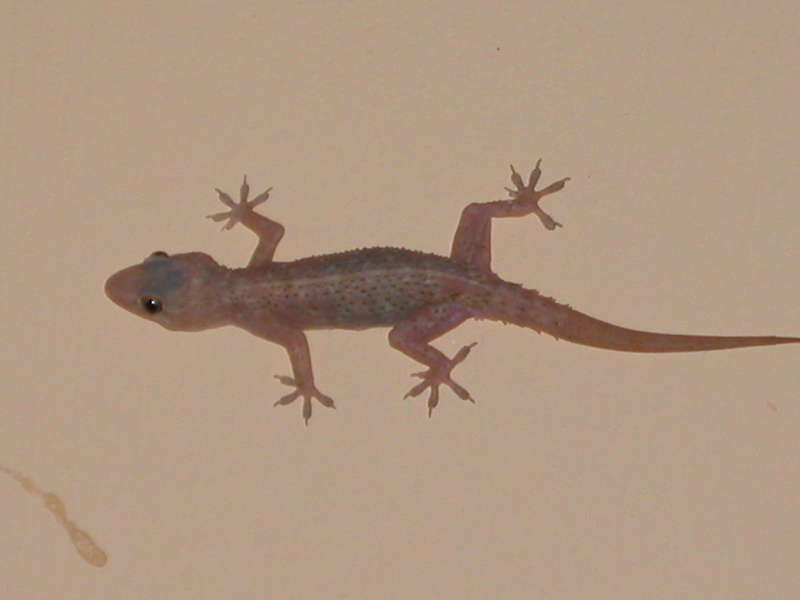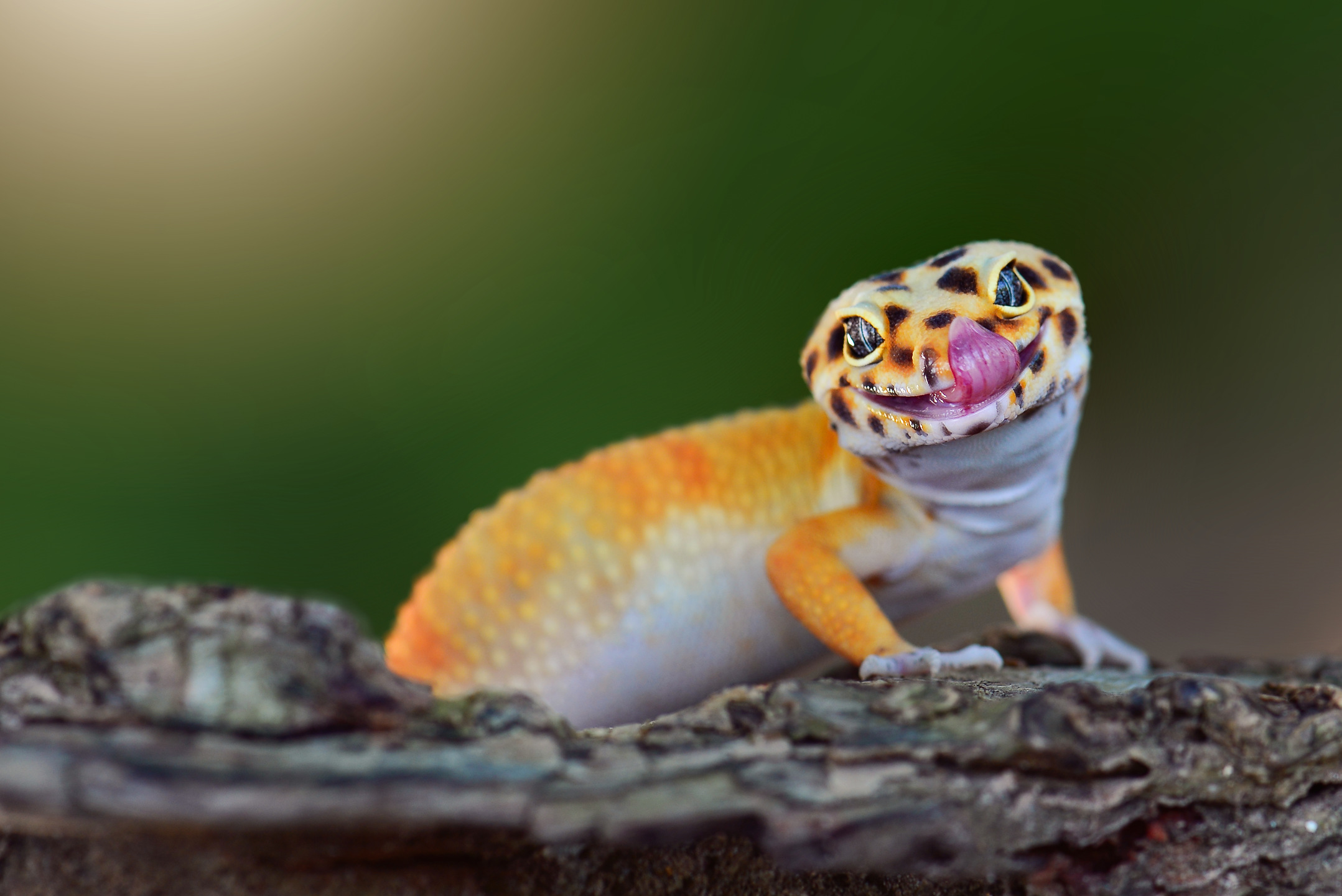Table Of Content

Seek out an exotic animal veterinarian who specializes in reptiles and especially lizards. Most geckos will recover from these maladies if they are treated in the early stages. Crickets can make up the main part of their diet with the addition of fruit flies and other small flies, silkworms, the occasional mealworm, and other insects. Gut load the prey prior to feeding a gecko; dust the prey with a calcium supplement two to three times a week, and a dusting of a multivitamin once a week. The Leaf-Toed Gecko is only found in rocky terrain in far southern California.
House Gecko Health Problems
Its vocalizations range from quiet peeps to rapid short squeaking sounds. They may be heard most easily on a quiet night when they are sitting near an open window. When removing the gecko from the enclosure, have a firm grip from the top and support their bottom.
How much space do house geckos need?
A growing gecko has a healthy appetite and usually needs feeding daily, while adult geckos should be fed 3-4 times a week. Due to this level of dependence on the environment, drops in temperature may act as a leading indicator for reduced gecko sightings in the medium term. Acute weather events such as rain or wind will result in acute decreases in Gecko sightings within that environment. It is unsure what impact these phenomena may have on the long term on distribution and the capacity of the common house gecko to compete with other gecko species.
Mediterranean House Gecko Species Information and Facts
Reptile carpets can work as well, but you’ll need to clean them quite frequently. You don’t need a massive terrarium to keep a Mediterranean house gecko. If you have fresh hatchlings, you can use a five-gallon tank.
Q: Do house geckos eat dead insects?
To provide a realistic representation of the natural environment, the lamp should be programmed to drop the temperature inside the enclosure to around 72°F at night. The enclosure should mimic their natural habitat to make them feel at home. Ensuring that the tank is secure and escape-proof is also essential, given the gecko’s adept climbing abilities. A well-structured enclosure not only provides a safe environment but also enhances the opportunity to observe the natural behaviors and climbing antics of these fascinating reptiles.
House geckos should have a basking temperature of around 90°F, as measured by a digital probe thermometer with the probe placed on the basking surface. In order to allow for proper thermoregulation, the enclosure should also have a cool area that stays between 75-85°F. Although the house gecko may look like a simple creature, you’ll have to make sure you know as much about them as you can – particularly how to keep them as pets. House gecko eggs have a soft, leathery shell that provides protection while allowing for gas exchange during incubation. The number of eggs laid can vary depending on factors such as the female’s age, size, and environmental conditions. If your Mediterranean house gecko shows any signs of discomfort, gently put them back into the enclosure.

Droppings can stain carpets, rugs, walls, curtains and other object within the home. By offering your gecko a varied diet, meeting their nutritional requirements, and maintaining an appropriate feeding schedule, you’ll ensure they remain healthy and happy in your care. It’s also crucial to dust the insects with calcium powder, as geckos require calcium for proper bone health. You might want to use supplements containing vitamin D3 as well, especially if your gecko doesn’t have access to natural sunlight or a UVB light source. You will also need calcium and vitamin supplements to help keep your gecko healthy. We recommend Repashy Calcium Plus LoD, lightly dusted on all feeder insects.
As a responsible pet owner, you should strive to provide an optimal environment to ensure your gecko lives a long and healthy life. Technically they can live without it, but we still recommend using it for house geckos. UVB lighting helps provide a clear day/night cycle, provides all of the vitamin D that your pet needs, strengthens the immune system, facilitates better digestion, and other benefits. House geckos typically range in size from three to six inches in length, with variations among different species and individuals. They have slender bodies, large eyes, and flattened heads, giving them a distinctive appearance.
Feeding your gecko insects caught in the wild will help provide a more balanced diet as their guts will contain many varied nutrients that farm raised crickets will not. If you wish, put in some small potted plants and keep them well watered. This will aid in keeping the humidity high in the tank as well as provide a more natural setting for your gecko. Using potted plants makes it easier to remove them for your frequent tank cleaning.
When it comes to the animals we live with (seen and unseen), it is important that we get to understand the role they play in the ecosystem. You’ll be surprised to find that some even play a helpful role around your house. Place a clean branch, a rock or two, and perhaps a piece of tree bark in the tank. Geckos love to hide on the underside of branches or chunks of bark during the day while they sleep. They also love to climb on rocks to bask as well as enjoy the stored heat. These small geckos grow to three to six inches in length and live about five years.
Lights should be on for 14 hours/day during summer and 10 hours/day during winter to simulate natural seasonal patterns. After mating the female may retain sperm for up to 12 months which allows them to continue producing eggs. This has been keen to their spread around the globe as only one female is needed to establish a population. They have proven highly adaptable and are often seen in urban areas living within buildings.
In the wild, they eat everything from moths to cockroaches. You can mix things up by rotating between roaches, worms, and crickets in captivity. Mealworms and other popular insect-based reptile foods work, too. If you want to provide the optimal habitat, a 20-gallon terrarium is a fantastic choice. Go for a vertically oriented model to allow for plenty of climbing opportunities.
It should be a multivitamin that contains calcium to meet all their nutritional needs. The humidity level in their enclosure should be between 60 and 75 percent at all times. It’s a good idea to invest in a hygrometer that you can monitor around the clock.
No comments:
Post a Comment